the review site with a difference since 1999
Universal Studios Home Video presentsFrankenstein: The Legacy Collection
(1931-1944)
"It's alive! It's alive! IT'S ALIVE!!"- Dr. Henry Frankenstein (Colin Clive)
Stars: Boris Karloff, Colin Clive, Basil Rathbone, Bela Lugosi, Lon Chaney Jr.
Other Stars: Mae Clarke, Dwight Frye, Elsa Lanchester, Edward Van Sloan, Ernest Thesiger, John Carradine, O.P. Heggie, Lionel Atwill, Cedric Hardwicke, Ralph Bellamy, George Zucco, Elena Verdugo
Director: James Whale, Rowland V. Lee, Erle C. Kenton
MPAA Rating: Not Rated for (violence, science that man was not meant to meddle with)
Run Time: 06h:21m:30s
Release Date: 2004-04-27
Genre: horror
| Style Grade |
Substance Grade | Image Transfer Grade | Audio Transfer Grade |
Extras Grade |
|---|---|---|---|---|
| A | A- | B+ | B- | A- |
DVD Review
Few creations of the silver screen have the immediately recognizable cachet of Jack Pierce's makeup for the Frankenstein monster in the classic Universal horrors of the 1930s and '40s. Combining German Expressionism and crackling science fiction, these films had a huge effect on those who saw them on original release and on their many re-releases, not to mention countless television airings. But to have beautiful, uncensored copies of these films on DVD, that is something else altogether. After letting their Classic Monster Collection discs go out of print for several years, Universal has re-released these films in a very nice two-disc set at a truly bargain price.The original Frankenstein (1931), directed by James Whale, started it all off with a bang. Dr. Henry Frankenstein (stage actor Colin Clive) has of course developed a method of bringing dead parts to life. With the aid of trusty hunchback Fritz (Dwight Frye), Frankenstein procures the pieces he needs and brings them to life in the form of the Monster (Boris Karloff in a star-making role). But the combination of a criminal brain and Fritz's sadistic torments make the Monster lash out, and soon he's on a rampage across the countryside.
This first attempt at the story is one of the better entries in the original 1930s horror cycle, with Whale demonstrating an unerring visual sense. For instance, even though the graveyard is plainly a stage, it's put together with such striking visuals that you can't help but develop a chill. The tower where Frankenstein conducts his experiments is a similar treat for the eyes, with its verticality and shafts of piercing light; in a particularly moving moment the newborn Monster reaches pathetically toward the sunlight streaming in, only to have it shut off by the cruel Fritz. There's not a bit of fat on the bone here, with the proceedings being concluded in less than 70 minutes. But this is a complete print, with the long-censored drowning of Maria (Marilyn Harris) reinstated.
The success of the 1931 film meant that Universal needed a sequel, and after some substantial persuading, Whale, Clive, and Karloff all returned for The Bride of Frankenstein (1935), widely considered not only one of the best horror films ever made, but one of the best films, period. In a framing device, author Mary Shelley (Elsa Lanchester) tells that there's still more to her famous story, and relates how Henry sought to give up on his experiments, only to be sucked back into the lab by the demands of the evil Dr. Pretorius (Ernest Thesiger) and the Monster himself. This time around, the Monster demands a mate, since Frankenstein has one of his own. The Nefertiti-headed and mummy-wrapped Bride (Lanchester again) is the result, but things don't work out quite as the Monster had hoped.
Whale's style is still in evidence here, with an addition of a saucy wit that makes the film sparkle in between its horrors. Karloff was insistent that the Monster should learn to speak, and the scenes between him and the violin-playing hermit (O.P. Heggie) are highly memorable and frequently touching as the Monster's desire for companionship is underlined. Clive is again intense to an extreme, while Thesiger makes for a delicate counterpoint with his trademark sly prissiness.
The Kenneth Strickfaden machinery was back in tow with Karloff in 1939 with Son of Frankenstein, as Wolf von Frankenstein (Basil Rathbone) follows in his father's footsteps, aided by hunchbacked shepherd Ygor (Bela Lugosi). This third film is also a classic of its type, and together with the first two makes for an excellent trilogy, even though director Rowland V. Lee isn't nearly the artist that Whale was. But there are still plenty of memorable scenes (lampooned heavily in Mel Brooks' Young Frankenstein), most notably the sequence in which the Monster rips off Lionel Atwill's (artificial) arm. Pretty nasty stuff for the Code era.
Ygor returns for Wolf von Frankenstein's younger brother (Cedric Hardwicke) in Ghost of Frankenstein, determined that Ygor himself be the next brain donor that will go into the sturdy body of the Monster. Lon Chaney Jr. dons the giant boots and neck bolts this time round, making for a rather pudgy-faced Monster after Karloff's gauntness (he had increased the cadaverous effect by removing a dental bridge; Chaney didn't have that option). This shortest entry in the series is by the numbers for the most part, but Lugosi steals the show whenever he's onscreen.
Since Universal also wanted to get a Wolf Man Legacy Collection onto the shelves in support of its disastrous Van Helsing film, the next installment, Frankenstein Meets the Wolf Man (1943) is found on that set, while the last in Universal's series, House of Dracula (1945) resides on the Dracula Legacy Collection. But the film in between, House of Frankenstein (1944) concludes this set. Things were starting to get a bit loopy as Universal attempted to duplicate the team-up success of Frankenstein Meets the Wolf Man in these last two pictures, by throwing just about all their monsters into the mix (apparently Universal still hasn't learned this lesson). Dr. Niemann (Karloff, this time out of the Monster makeup) escapes from a madhouse and first steals a sideshow attraction that features the bones of Dracula (John Carradine). Once the vampire has been awakened and quickly dispatched, Niemann turns to reviving the Frankenstein Monster and promising poor Larry Talbot (Chaney) a cure for his lycanthropy. It's pretty much hokum for the kiddies through and through, but Karloff is always entertaining to watch, and Carradine's Dracula has a smooth viciousness that Lugosi never quite attained in the role (though of course without the Hungarian's sensuality).
This is an amazing package of films that any horror fan will be happy to have, especially in tandem with the other two monster Legacy Collection releases. Sets for the Creature from the Black Lagoon, The Mummy and The Invisible Man are promised for later this year, so there's more classic horror goodness on the way too. The grades are for the first three films; consider the last two throw-ins (the menu refers to all four sequels as bonus features, so that's quite justifiable).
Rating for Style: A
Rating for Substance: A-
Image Transfer
| One | |
|---|---|
| Aspect Ratio | 1.33:1 - Full Frame |
| Original Aspect Ratio | yes |
| Anamorphic | no |
Image Transfer Review: These films have been released on DVD before, and in four cases, they appear to be the very same video transfers. But the fifth case, that of Bride of Frankenstein, is a very special one. The first disc was misframed, excessively soft and featured a fair amount of ghosting and combing. The result was frankly a mess. Happily, this set provides a new transfer of this great film, correcting the framing and with a great deal more texture and detail. Some comparison screen captures will demonstrate the improvement on this film.
| New | Old |
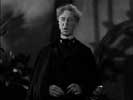 | 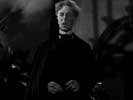 |
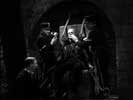 | 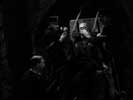 |
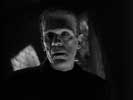 | 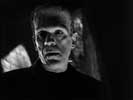 |
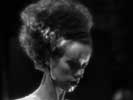 | 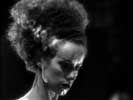 |
All of the features have mild speckling and moderate scratching throughout, though Ghost in particular looks quite fresh. These were generally (other than the complaints noted above) considered very good for their day, and they're still quite satisfactory considering the age of these films. Greyscales are generally quite good, with excellent shadow detail.
Image Transfer Grade: B+
Audio Transfer
| Language | Remote Access | |
|---|---|---|
| Mono | English, Spanish | yes |
Audio Transfer Review: Other than on the original film, I didn't notice any significant audio upgrades for the serviceable 2.0 mono on this set. There's the expected hiss and mild crackle throughout. The 1931 feature is much noisier this time around. It had been criticized on its earlier DVD incarnation for artificially lowering the noise levels, but frankly I prefer the cleaner sound, even though a bit of the naturalness is stripped away. Tastes may vary on this point, but if you agree there will be a reason to keep the first DVD release. Music is tinny but that's an artifact of the period. Dialogue is generally quite clear on all films.
Audio Transfer Grade: B-
Disc Extras
Static menu with musicScene Access with 88 cues and remote access
Subtitles/Captions in English, French, Spanish with remote access
4 Original Trailer(s)
2 Documentaries
1 Featurette(s)
2 Feature/Episode commentaries by film historians Rudy Behlmer and Scott MacQueen
Packaging: Digipak
Picture Disc
2 Discs
2-Sided disc(s)
Layers: RSDL
Extra Extras:
- Short bonus film
- Poster and still galleries
Unfortunately, the commentaries were discontinued by the time Universal got to Son of Frankenstein, so that and its sequels get pretty short shrift. Realart reissue trailers for all but Son are included, and there are poster and still galleries for the first two features. Two excellent hour-long documentaries address these first two entries in the series as well, with plenty of interview footage and enough behind-the-scenes goodies to mollify any fan. One new feature to this set is a short discussion with Stephen Sommers on the influence of the classic films on Van Helsing, and it's essentially a little promo piece that's easiliy skipped. Rounding out the set is the 1930s short comedy film Boo!, which uses footage from these and other horrors in a comic way. It's not exactly funny or humorous, but it's an interesting look at Universal poking fun at itself and the genre it made so successful.
Extras Grade: A-
Final Comments
Essential horror classics, even though the late entries are quite a bit weaker. The transfers are the same as on the prior releases, except for Bride, which has a huge video upgrade, and the different audio track for the original film. The supplements are excellent. Even those who own the originals would be well-advised to upgrade just for the improved Bride.Mark Zimmer 2004-07-23
